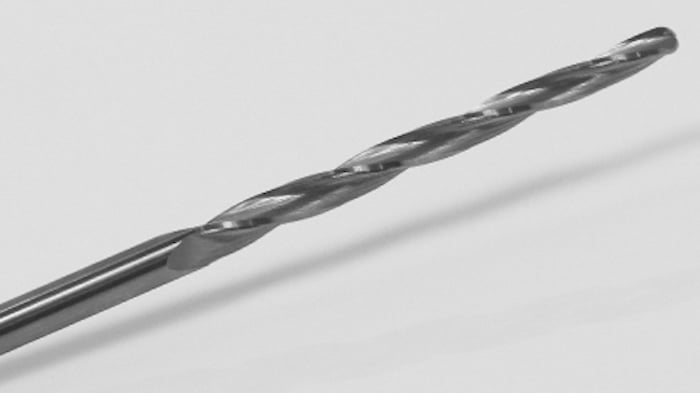2 min read
Avoid out-of-tool disruptions and stabilize pricing with blankets
For long-running product lines with well-established cutting tool usage, blanket orders are an easy way to ensure that...

A well-designed micro reamer can produce finished holes with a tolerance as tight as 0.0002 in. The key to success, of course, is a tool that does this consistently and gives you a high number of parts per tool. These are requests MITGI engineers tackle for customers every day.
Here is how we approach the challenge of designing a long-lasting micro reamer for a specific application.
Reamers are made to precisely finish a hole, and that won’t go well if you ask it to do too much of the initial cutting. The tool will wear out faster because it wasn’t designed to remove that much material. This will shorten tool life.
The drilled pilot hole needs to be approximately 95 percent of the finished hole size. We advise machinists to let the reamer do just its precision finishing work, about the final 3 to 5 percent.
To move from an initial rough cut to a precise finish requires your machine to be properly set up, using the correct drill speed and feed rate for the material. This will help minimize the amount a tool wanders. Even a perfectly designed reamer for your project will not overcome the wrong machine settings.
Choosing the correct size reamer seems obvious. However, you should verify a tool’s tolerance with the manufacturer. MITGI engineers can help you identify a micro reamer design that will have a large enough shank diameter to provide the tool stability required for consistency. We can also help you determine whether you need a chamfered end for the best results.
Even with the small size of micro reamers, flute count impacts the accuracy of your work. MITGI engineers generally recommend a 4-flute micro reamer to increase tool stability because it provides more contact points compared to a 2-flute reamer. A 4-flute tool will produce a straighter and more accurate hole, finished at a tighter tolerance.
The applications a reamer is best suited for depend on the helix direction of its flutes. Left-hand spiral, right-hand spiral, or straight flutes each have different advantages. Spiral flutes are better for quickly clearing chips that build up during use, but straight flutes work well too because only a small amount of chips are generated during a reaming operation.
For a through-hole, we recommend a reamer with a left-hand spiral or straight flute. This is because, with the left-hand spiral, the helix of the flute goes counterclockwise and will push the chips forward through the hole.
We recommend a reamer with straight flutes or right-hand spirals for blind holes. The clockwise rotation of the flutes will allow the chip to be brought back up and out of the hole so that the reamer can reach the bottom.
Depending on the material you’re working with, a coating is essential to produce accurately reamed holes at tight tolerances repeatedly. The coating will keep edges sharper, longer, and extend tool life. MITGI technicians can guide you through your coating options. Here is some information on matching a tool coating to the material you’re cutting:
While you can ream material at a high feed rate, you need to slow the speed, compared to drilling speed, for more precise cutting. Don’t ream in reverse; that operation is hard on the tools and the material. If a cutting oil is specified with the reamer or the material you’re machining, use the appropriate oil to achieve a precise cut.
Achieving tight tolerances while reaming can set your business apart from your competition, and your customers will notice the quality immediately. Choose a reamer manufacturer like MITGI that can help you design the right tools and can deliver custom-order tools quickly when you need them.
Mar 31, 2025by MITGI
For long-running product lines with well-established cutting tool usage, blanket orders are an easy way to ensure that...
Mar 27, 2025by MITGI
High-volume, low-mix production environments count on predictability to keep their long-running jobs profitable and on...
Mar 4, 2025by MITGI
When jobs run for many months or years, it may be worth exploring whether there are advantages in moving to a higher...